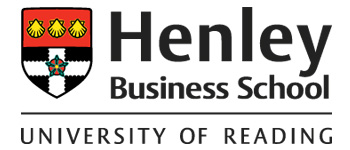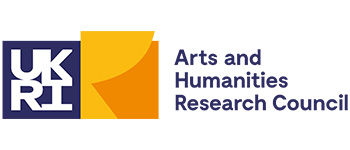Downloadable classroom resources with teacher guidance
In this section are a range of classroom materials. Each is fully resourced and includes an explanation of how it could be used. All are adaptable for use in a range of settings. Simply click on a resource title and image to access the materials.
People of 1381 narratives
The People of 1381 profiles made by the academic team have been adapted to be more accessible for use in schools by turning them into narratives told from the perspective of the person. They assume less prior knowledge and seek to encapsulate the elements of historical uncertainty surrounding the lives of these people, while creating an interesting and relatable story for students to use. They can be used as a set or individually, to show the diversity of people and their experiences, to compare the local to the national narrative and/or to build knowledge of the world in 1381. Teacher guidance to help with planning is also provided. These resources were made by Anna Webster, Head of Humanities, King Edward VI School, Bury St Edmunds.

Resources
- Teacher guidance to help with planning how to use these stories with students.docx (.pdf)
- Summarised character cards.docx (.pdf)
- People of 1381 Sources.mp4
People of 1381 narratives
- Goditha de Stathun.docx (.pdf)
- John Hende.docx (.pdf)
- John Peper.docx (.pdf)
- John Preston.docx (.pdf)
- John Reed of Rougham.docx (.pdf)
- John Spayne.docx (.pdf)
- John Stakepoll.docx (.pdf)
- Margaret de Enges.docx (.pdf)
- Margery Tawney.docx (.pdf)
- Robert Hull.docx (.pdf)
The historians Professor Adrian Bell and Dr Helen Lacey use the examples of Margery Tawney and Goditha de Stathum to explain how the People of 1381 academic team have constructed stories from the source material. This short film lasts seven minutes and could be used in sections.
Images to build knowledge of the world of the People of 1381
This resource is designed to help pupils to understand what England was like in 1381. Twelve images with 12 accompanying descriptions are provided to help pupils to know the material world in which people lived and what people believed and thought about what was possible in their world. Teaching using these resources can help to create a sense of the period in order to support gaining secure knowledge of specific events and people. These resources were developed by the participants of the HA People of 1381 Teacher Fellowship.

The geography of 1381
This resource is a map of the Peasants' Revolt in 1381. Each tab marks a place where something happened and we know about it. Pupils can use it to note the spread of the Revolt over time. Some of the areas are 'live', and a click on the tab gives more information about events and people. It can be used with the extracts from the document '1381 a chronology' in the teacher knowledge section. This resource was developed by Helen Snelson, PGCE History Leader, University of York.

How serious was the Peasants' Revolt?
The enquiry presented aims to teach a more complete picture than the traditional Revolt narrative. It enables students to learn that the Revolt was more widespread and far more threatening to royal authority. Students explore the driving forces behind the Revolt from the perspective of those who were involved. The resources focus on Somerset and Kent, but the enquiry could be adapted to substitute Somerset for another locality. A full teacher resource, including key knowledge and lesson plans, is provided with the lesson PowerPoint and student resources. These resources were developed by Andrew Sweet, Head of Humanities, Millfield Prep School, and Rachel Wilson, Teacher of History, Highworth Grammar School.

St Albans: a case study of 1381
This set of adaptable resources focuses on St Albans as a case study to support students' learning about the events of 1381, the people involved and what mattered to them. They reveal how the causes, events and consequences of 1381 have local elements, as well as being part of a wider narrative. They show how people were part of the wider Revolt and were also locally focused. Suggestions are made as to how to use these resources as part of an enquiry. These resources could also be used as part of an adapted version of the enquiry 'How serious was the Revolt?'. These resources were developed by David Ingledew, Principal Lecturer in History Education, University of Hertfordshire, and Roy Scivyer, Head of Politics and Key Stage 3 History Lead, Central Foundation Boys' School.

Resources
- The Revolt in St Albans in (about) two minutes.docx (.pdf)
- Teacher notes_KS3 enquiry_St Albans and the people of 1381.docx (.pdf)
- Teacher guidance film_St Albans and the people of 1381.mp4
St Albans case study resources:
- Causes cards_St Albans and the people of 1381.docx (.pdf)
- Consequences cards_St Albans and the people of 1381.docx (.pdf)
- Events cards_St Albans and the people of 1381.docx (.pdf)
- Map_St Albans and the people of 1381.pptx (.pdf)
- Top Trumps cards_St Albans and the people of 1381.docx (.pdf)
- Why do historians disagree about William Grindecobbe and the 1381 Revolt in St. Albans KS3.docx (.pdf)
- Why do historians disagree about William Grindecobbe more detailed.docx (.pdf)
The historians Professor Adrian Bell and Dr Helen Lacey use the examples of Margery Tawney and Goditha de Stathum to explain how the People of 1381 academic team have constructed stories from the source material. This short film lasts seven minutes and could be used in sections.
St Albans: tour of the historic environment
St Albans has a long history and was at the centre of events in 1381. But what remains today? This guided tour of St Albans can be used for onsite learning or in the classroom. The guidance gives historical detail and practical advice. There is a PowerPoint of images for use in the classroom. A potted history of the Revolt in St Albans is also provided. These resources were developed by David Ingledew, Principal Lecturer in History Education, University of Hertfordshire, and Roy Scivyer, Head of Politics and Key Stage 3 History Lead, Central Foundation Boys' School.

Induction lesson: How do historians find out about the medieval past?
The topic is 'How do historians find out about the medieval past?' It is designed to engage students through an explanation of how historians work. It features members of the People of 1381 team, including them talking about their work in the archives. These resources were developed by Genella Thomas, Teacher of History, Aldridge School.

1381: what happened and how do we know?
These two lessons are designed for Years 7 and 8. The first lesson is about discovering what happened in 1381 and is evidence-based. The second lesson is about understanding the work of historians, and in particular thinking about how the work of recent historians has changed our understanding of the events of 1381. It aims for students to get an idea of how painstaking and laborious the process of historical research can be. A teacher guidance document, teaching PowerPoints with notes and links, and fully adaptable resources are provided. These resources were developed by Genella Thomas, Teacher of History, Aldridge School.

Resources
Lesson 1
- L1_2_Evidence worksheet.docx (.pdf)
- L1_Evidence Pack Teacher Guide.pptx (.pdf)
- L1_Evidence Pack.docx (.pdf)
- L1_PowerPoint.pptx (.pdf)
Lesson 2
Historians in the archives
This is a six-minute film made by the People of 1381 team when they visited the Essex Records Office. The pupils will see pictures of the inside of an archive. Dr Herbert Eiden then shows some of the manorial records that the team used to research the background of the rebels. He models the questions that the records raise for the academic team. This is a small window into the nuanced thinking, the skill in record-reading and the depth/breadth of knowledge (as well as the sheer nerdiness) that historians bring to their work.

Resources
Interpretations of the Peasants' Revolt
This resource addresses the question: 'How and why do historians disagree about the Peasants' Revolt?' After first reading the Marxist interpretation from Rodney Hilton's 1973 Bond Men Made Free, the students will read a contemporary challenge from historian Joe Chicks. This is intended to develop a deeper understanding of the events of 1381, alongside knowledge of how and why views are challenged over time. The texts are unabridged, so there are a number of literacy strategies within the activities to support students less familiar with academic historical writing. This resource would make a good basis for a discussion activity or a stand-alone homework. This resource was developed by Judith Vandervelde, History Teacher and Literacy and Thematic Learning Co-ordinator, The Archer Academy.

Resources
- Historical interpretations of the Peasants Revolt.pptx (.pdf)
- People of 1381 Interpretations.mp4
- The People of 1381 Modern vs Medieval.mp4
- The People of 1381 European Rebellions.mp4
Professors Adrian Bell and Anne Curry of the People of 1381 academic team discuss the way that the interpretations of the 1381 Revolt have changed over time. They talk about who has used the Revolt and for what purposes. They use their extensive knowledge of the source material to suggest why so many interpretations have been made and how new approaches to the data have changed approaches. They finish with a summary of their interpretation about what the sources reveal about the period and the context to the Revolt. This is a 12-minute film that can be used in small sections.
In this seven-minute film, Professors Adrian Bell and Dr Andrew Prescott of the People of 1381 academic team compare the 1381 Revolt to revolts in more recent time, for example the 1991 Poll Tax protests and the Arab Spring in 2011. They explain how a study of modern riots and revolts can deepen our understanding of those in the far past.
In this eight-minute film, Professors Adrian Bell and Dr Andrew Prescott of the People of 1381 academic team discuss the 1381 Revolt in England in a European context. They argue that we cannot understand the Revolt in England in isolation from the upsurge of rebellion across the continent. They explain how historians' interpretations of what was going on in this period have changed over time.
John of Gaunt in 1381
A single-page resource for pupils about John of Gaunt in 1381. It is written as a story. From it, pupils can learn some of the causes of the Revolt and how Gaunt, and his property and people, became a focus for hatred and were attacked. This resource was developed by Helen Snelson, PGCE History Leader, University of York.

Guided reading: historian Helen Carr
The historian Helen Carr writes about the Revolt in her book The Red Prince, John of Gaunt. Provided here is a short film clip of Helen Carr in conversation with a history teacher and a worksheet with extracts from the book and questions. One or both could be used as part of teaching the age of 1381. This resource was developed by Andrew Sweet, Head of Humanities, Millfield Prep School.

Stand-alone films

Resources
- The consequences of 1381 for the rebels.mp4
- Database.mp4
- Petitions.mp4
- Interpretations.mp4
- Sources.mp4
- Diversity.mp4
- European rebellions.mp4
- Manorial records.mp4
- Modern and medieval.mp4
- Significance and legacy.mp4
The consequences of 1381 for the rebels (Adrian Bell and Herbert Eiden)
A five-minute film clip in which historians Professor Adrian Bell and Dr Herbert Eiden of the academic research team discuss the evidence for what happened to people who had been rebels after the Revolt of 1381.
Database (Adrian Bell and Helen Killick)
In this ten-minute film clip Professor Adrian Bell and Dr Helen Killick introduce us to the People of 1381 database. This has been constructed by the academic team and is an exciting example of how the use of big data is transforming historical research. They demonstrate how to search for people using the database and how to interpret the data. They model how they puzzle over what the data is revealing about the past. The mapping tool enables people to be identified in specific areas.
Petitions (Adrian Bell and Helen Killick)
In this six-minute film clip Professor Adrian Bell and Dr Helen Killick explain medieval petitions for justice and how they operated in society at the time. They then explain the information they reveal and how they use them as sources to construct their interpretations of the 1381 Revolt.
Interpretations
Professor Adrian Bell of the University of Reading and Professor Anne Curry from the 'People of 1381' research team discuss how views of the revolt of 1381 have changed over the years. This video forms part of the teacher resources created as part of the Historical Association 'People of 1381' teacher fellowship.
Sources
This discussion between Professor Adrian Bell of the University of Reading and Dr Helen Lacey of Mansfield College, University of Oxford, of the People of 1381 project considers how historians work with the sources of an event such as the revolt of 1381. This video forms part of the teacher resources created as part of the Historical Association 'People of 1381' teacher fellowship.
Diversity
In this short twelve minute film, 'People of 1381' team members Professor Adrian Bell of the University of Reading and Professor Andrew Prescott of the University of Glasgow discuss the social makeup of the 1381 revolt and the involvement of women and other groups.
European rebellions
Professor Adrian Bell of the University of Reading and Professor Andrew Prescott of the University of Glasgow discuss how the English Revolt of 1381 relates to other popular rebellions in Europe in the later middle ages. This video forms part of the teacher resources created as part of the Historical Association 'People of 1381' teacher fellowship.
Manorial records
In this twelve-minute short film, Professor Adrian Bell and Dr Herbert Eiden of the University of Essex discuss the importance of manorial records as key sources for understanding peasant life and what they reveal about the revolt.
Modern and medieval
Professor Adrian Bell of the University of Reading and Professor Andrew Prescott of the University of Glasgow, both members of the 'People of 1381' research team discuss the similarities and differences between medieval and modern popular revolts. This video forms part of the teacher resources created as part of the Historical Association 'People of 1381' teacher fellowship.
Significance and legacy
In this eight minute clip, 'People of 1381' team members Professor Adrian Bell of the University of Reading and Dr Helen Lacey of Mansfield College, University of Oxford, consider the impact and legacy of the revolt of 1381 in popular politics and culture.
Quick Links:
- Support for teacher knowledge, curriculum and teaching ideas
- Downloadable classroom resources with teacher guidance






